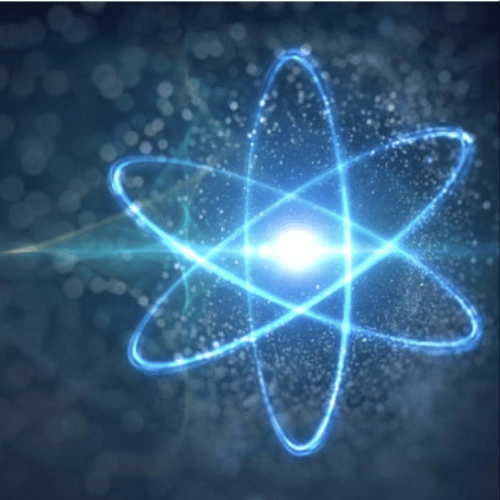Q Dalton’s atomic Theory Class 9 📚
Q drawbacks of dalton atomic theory class 9📚Q limitations of dalton’s atomic theory class 9📚Q dalton atomic theory class 9 ncert
• Dalton’s Atomic
Theory The idea that all matter consists of a large number of individual small particles originally originated from early Indian and Greek philosophers. The Indian philosopher Kanada was the first to propose that matter is composed of very small individual particles called paramanu. John Dalton developed the concept of atomic mass in 1805 and put the atomic hypothesis into a useful scientific question. An important feature of Dalton’s atomic theory is that matter is considered to be discrete from point to point at the microscopic level. dalton’s postulates phrased in modern language , can be started as follows:

• Particle Nature of the Elements
1. A sample of an element consists of many tiny particles called atoms.
2. Atoms can neither be divided, destroyed or created. Even during any chemical reaction, atoms only combine to form new products.
3. Atoms of the same element are identical in all respects, i.e., shape, size, mass and other physical or chemical properties.
4. Atoms of different elements are characteristically different in all respects, viz., shapes, sizes, masses and chemical properties.
5. Atom is the smallest unit that takes part in chemical combination.
6. Atoms combine in the ratio of whole numbers to form compounds.
7. The relative numbers and kinds of atoms are constant in a compound.
• Merits of Dalton’s Atomic Theory
Dalton’s atomic theory has been very useful in explaining certain experimental observations.
(1) Dalton’s atomic theory explains the law of conservation of mass because atoms can neither be created nor destroyed, When a reaction takes place, the atoms change their state of combination with other atoms. This will be more understood with following example:
A compound of CaCO, is made of 1 atom of Ca, 1 atom of C and 3 atoms of O. When heated
CaCO3 → CaO + CO
The product CaO and CO₂ also contains the same number of atoms of various elements. Also, therefore, the mass of products and reactants remains same during the reaction. Thus, we can say mass remains conserved.
(2) The theory also explains the law of definite proportions. The theory explains the observation that all samples of a pure compound have exactly the same composition. Now, since the “number of atoms”, “the kind of atoms” and the “mass of atoms” of each element in a given compound is fixed, therefore, a compound will always have the same elements combined together in the same proportion by mass. For example, a water molecule (H₂O) is formed by a combination of 2 hydrogen atoms and 1 oxygen atom. If water from rain, sea, ice or water obtained during any chemical reaction is taken, then it is found to contain the same number of hydrogen atoms and oxygen atom always, each atom having same mass , therefore, masses of hydrogen and oxygen elements in water will be in constant proportion
(iii) dalton was the first to recognise a workable distinction between the ultimate particle of an element ( atom ) and that of a compound ( compound atom which was later called molecule )
• Limitations of Dalton’s Atomic Theory
Although Dalton’s atomic theory successfully explained the law of conservation of mass and the law of definite proportion but it failed to explain other laws of chemical combination such as Gay Lussac’s law of combining volumes.
The main drawbacks of Dalton’s atomic theory are:
1. According to Dalton’s atomic theory, the atom is indivisible. But the modern scientific investigations have clearly shown that the atom can be split into electrons, protons and neutrons.
2. The occurrence of isotopes (i.e., atoms of the same element having different masses, for example, there are three isotopes of oxygen having atomic mass of 16, 17 and 18) has conclusively proved that the atoms of the same element are not alike .
3. The postulate that atoms of different elements have different masses is not true. There are atoms of different elements that have the same mass (such as Argon – 40 and Calcium – 40). These atoms are called isobars.
4. It failed to explain why atoms of different elements show different properties like mass, size, valency, etc.
5. It failed to explain how and why atoms of different elements combine together to form compound atoms (or molecules).
Q What Is Dalton’s Atomic Theory? A Comprehensive Guide For Class 9 Students
Frequently Asked Questions – FAQs
Ans. Dalton’s atomic theory provides a simple explanation for the laws of chemical combination.
(a) The postulates of Dalton’s atomic theory that “the elements consist of atoms and that atoms can neither be created nor destroyed” can be used to explain the law of conservation of mass.

